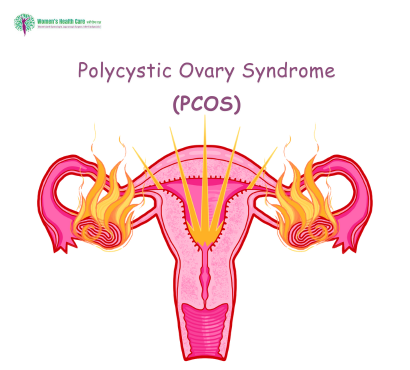Polycystic Ovary Syndrome (PCOS) is a complex hormonal disorder affecting an estimated 3.7–22.5% of Indian women, causing irregular menstruation, high androgens, and problems with metabolism and fertility. Lifestyle changes and early diagnosis pave the way for improved long-term health.
2 | What Is PCOS?
A multifactorial condition characterized by:
- Hormonal imbalance: elevated androgens (testosterone)
- Menstrual irregularity: absent, scarce, or unpredictable periods
- Polycystic ovaries: many small follicles visible on ultrasound
- Often accompanied by insulin resistance, central obesity, acne, excess body hair, infertility, and mood issues.
3 | Key Symptoms
| Symptom | What to Look For |
| Periods | <9 cycles/year, >35 days apart, or absent for 3+ months |
| Hyperandrogenism | Facial hair, scalp hair thinning, and moderate-to-severe acne |
| Weight Gain | Central/abdominal obesity (waist >80 cm); >40% obese among Indian women with PCOS. |
| Skin Changes | Dark underarms/neck patches (acanthosis nigricans) |
| Infertility | Difficulty conceiving due to irregular ovulation |
| Insulin Resistance | Cravings, fatigue, family history of diabetes |
| Emotional Impact | Anxiety, depression, body image issues |
4 | Diagnosis Criteria
PCOS diagnosis requires 2 of the following 3, with other causes excluded (Rotterdam criteria)
- Irregular/anovulatory cycles
- Clinical or lab evidence of high androgens
- Polycystic ovaries (≥12 follicles 2–9 mm) on ultrasound
Additional tests may include thyroid, prolactin levels, and adrenal function to rule out other disorders.
5 | Role of Insulin Resistance & Hormones
Insulin resistance is central to PCOS—it increases insulin, which signals the ovaries to produce more testosterone. Genetic predisposition and lifestyle factors like weight and diet are both contributors.
6 | Management Approaches
A. Lifestyle First
- Weight management: Losing 5–10% body weight can restore ovulation and improve insulin sensitivity
- Balanced diet: Low-glycemic carbs, high fiber, lean protein, omega-3s, along with superfoods like chickpeas, cinnamon, jambul, moringa for blood sugar control as per Indian nutrition insights
- Regular exercise: 150 minutes/week helps menstrual regulation and metabolic health
B. Medication
- Metformin to reduce insulin resistance
- Hormonal contraceptives to regulate cycles and reduce androgens
- Anti-androgens like spironolactone for acne and hair growth
- Ovulation induction (letrozole, clomiphene) for pregnancy
C. Supplements & Adjuncts
- Myo-inositol to improve ovulation and hormone markers
- Vitamin D and probiotics may aid metabolic and hormonal balance
D. Addressing Emotional Wellness
Psychological support is key—mood disorders are common due to hormonal imbalances and fertility challenges.
E. Ongoing Monitoring
Regular checks: weight/BMI, glucose, lipid profile, ultrasound for ovarian size
7 | Supporting Infertility
- Weight loss + ovulation medication resolves most cases
- If needed: IUI or IVF after 6–12 months of conservative therapy
- PCOS pregnancies are higher risk—must be monitored for gestational diabetes and hypertension
8 | Long-Term Health Risks
Women with PCOS have elevated risks of:
- Type 2 diabetes
- Heart disease
- Dyslipidaemia
- Sleep apnea
- Anxiety and depression
Ongoing care and screening are essential.
9 | When to Consult
Seek evaluation if you experience:
- Irregular or missed periods for over 3 months
- Significant acne or sudden hair growth
- Weight gain with hunger or fatigue
- Difficulty conceiving after 6 months of trying
Early diagnosis enables better long-term outcomes.
PCOS affects many Indian women but can be skillfully managed with early detection, consistent lifestyle measures, tailored medications, and emotional support. Creating awareness and access to good care empowers women to enjoy vibrant reproductive and overall health.

